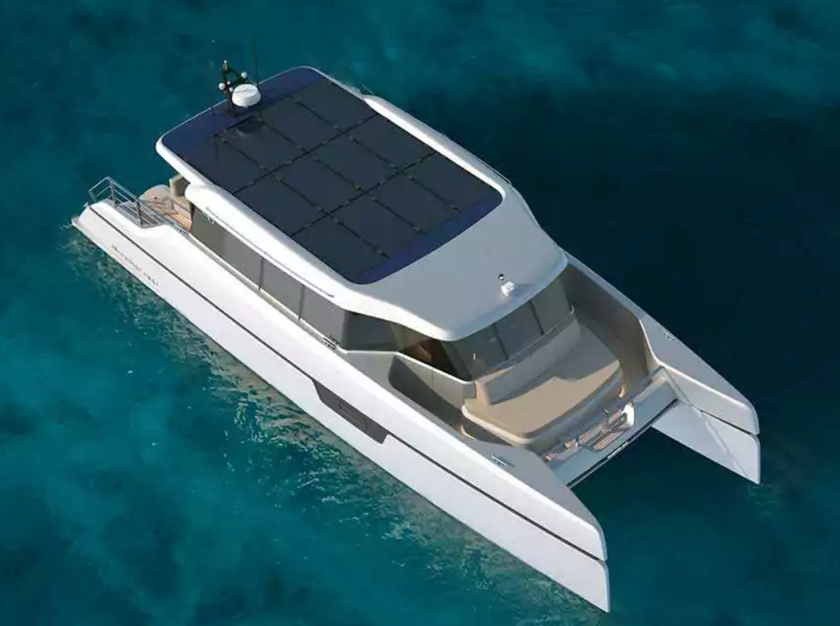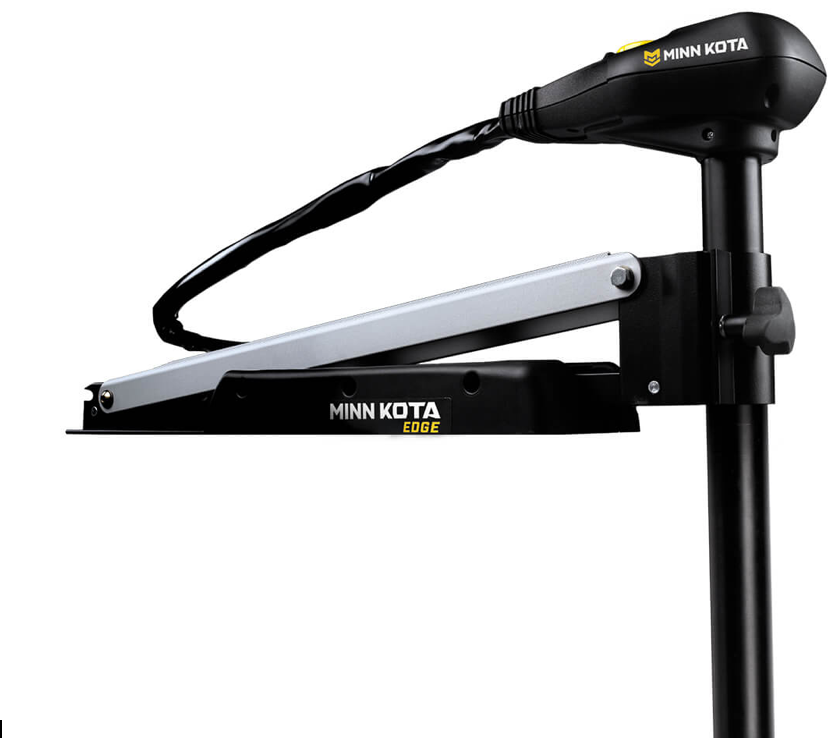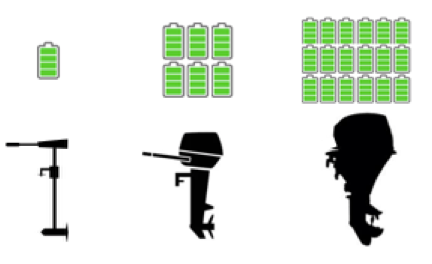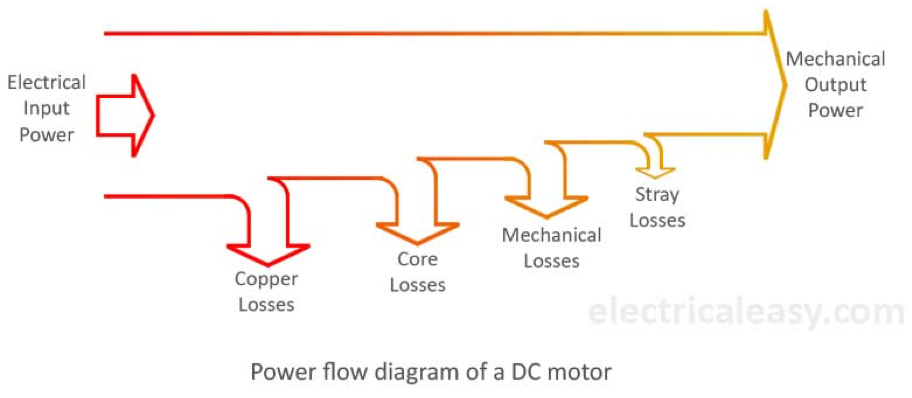About Electric Propulsion, Part 3: Battery Power for Your Electric-Boat Motor

Working with Watts = Volts x Amps
Let’s put this common measurement to use as applied to electrically powered boats. You are transferring electric power to mechanical power to move your boat and they are measured in the same units. To get all of the benefits of a 10kW electric motor you need to have a battery with a voltage and amperage that can supply at least 10 kW — 10,000 watts.
In theory, it could be any combination: a 50V battery sending a current of 200A would do it, as would a 100V battery sending 100A. In real life, though, there are constraints, which you can see by taking it to the ridiculous — a 2V volt battery sending 5,000A would be like trying to run a boat off a cell phone battery.

To give you some real life examples, an electric trolling motor of 1kW might be perfect for fishing from a small boat, so a 12V battery and a current of 50A could achieve that.

At the other end, there are now electric outboard motors rated at more than 150kW and inboards well beyond that. To get high power, you need high voltage, high current, or medium both. In terms of amps, you’re getting up there when you’re talking about 300 amps and electric-car motors generally have voltages of 360V to 400V and up to 800V. If you had an 800V/300A motor it could put out up to 240,000 watts of power — 240 kW, while a 600V/200A motor could produce 120kW.
In the middle range of electric boat motors, the voltage is usually somewhere between 48V and 144V and the amps could go up to 250A or 300A.
When we’re talking about this equation of Watts = Volts x Amps and theory versus reality, there are some other things to be aware of. First is that motors have an input power and an output power. If you put in 10kW of power, some of it is used up in spinning the motor and some energy is lost as heat, so the output power will be smaller than 10kW. Not a lot smaller, electric motors are very efficient. But smaller.

Motors may also have two power ratings. Peak power measures the maximum amount of power the motor has available, but only for short periods of time. Continuous power measures the power that can be put out at a constant rate for long periods of time. Some motor manufacturers only tell you one of the ratings, many tell you both.
Similarly, your battery may have a couple of ratings for the volts like nominal voltage, voltage range, discharge voltage and others.